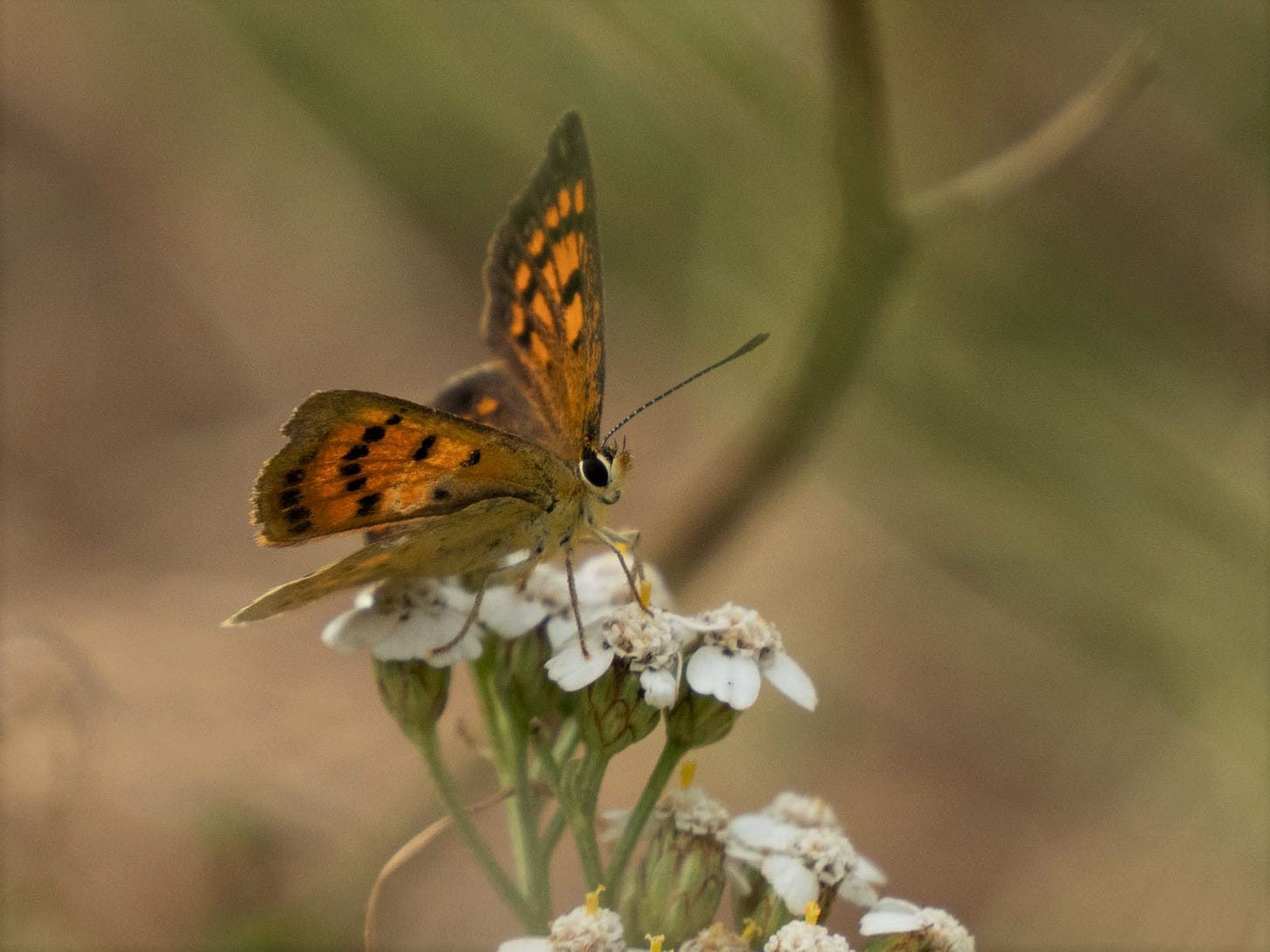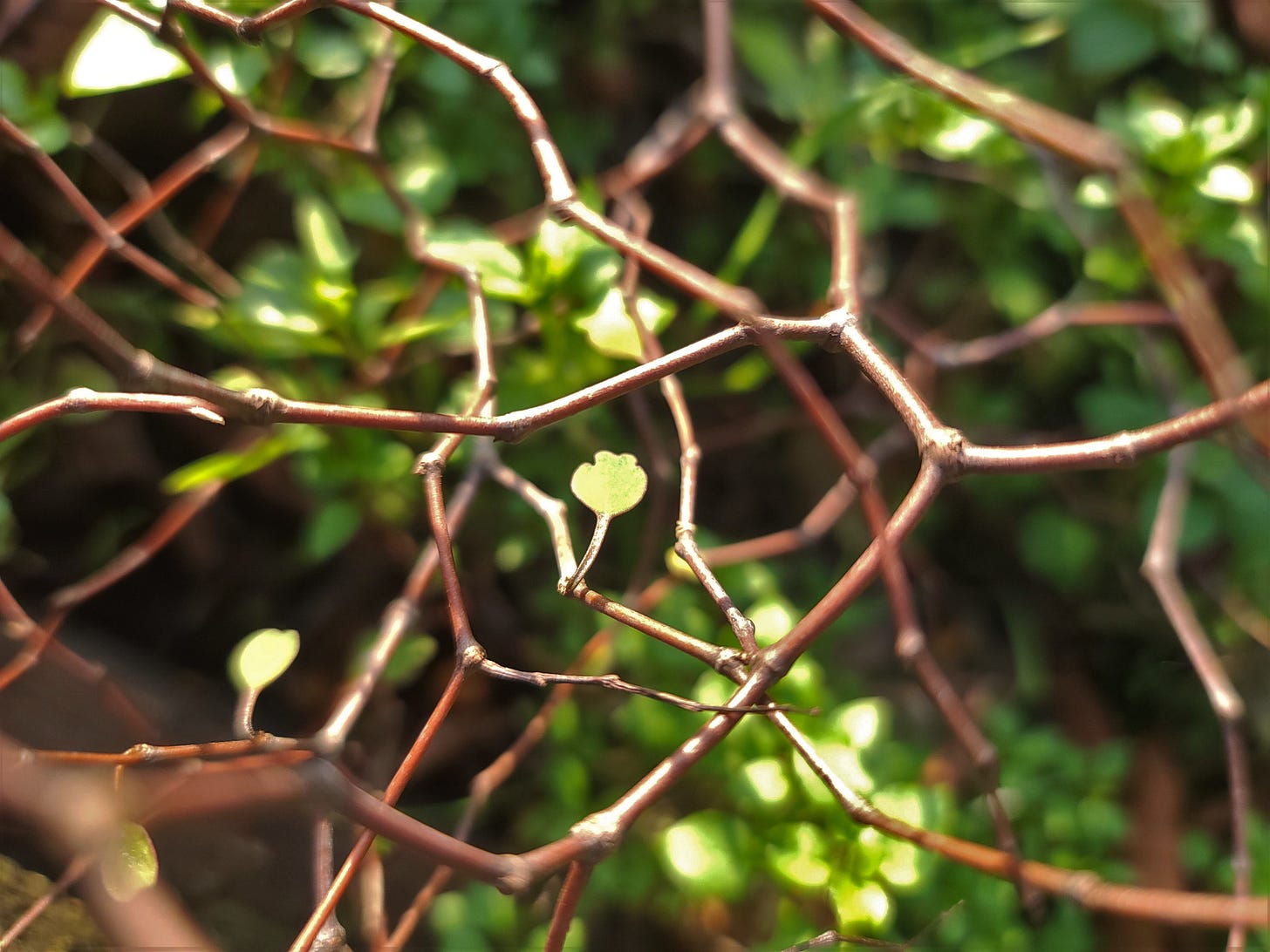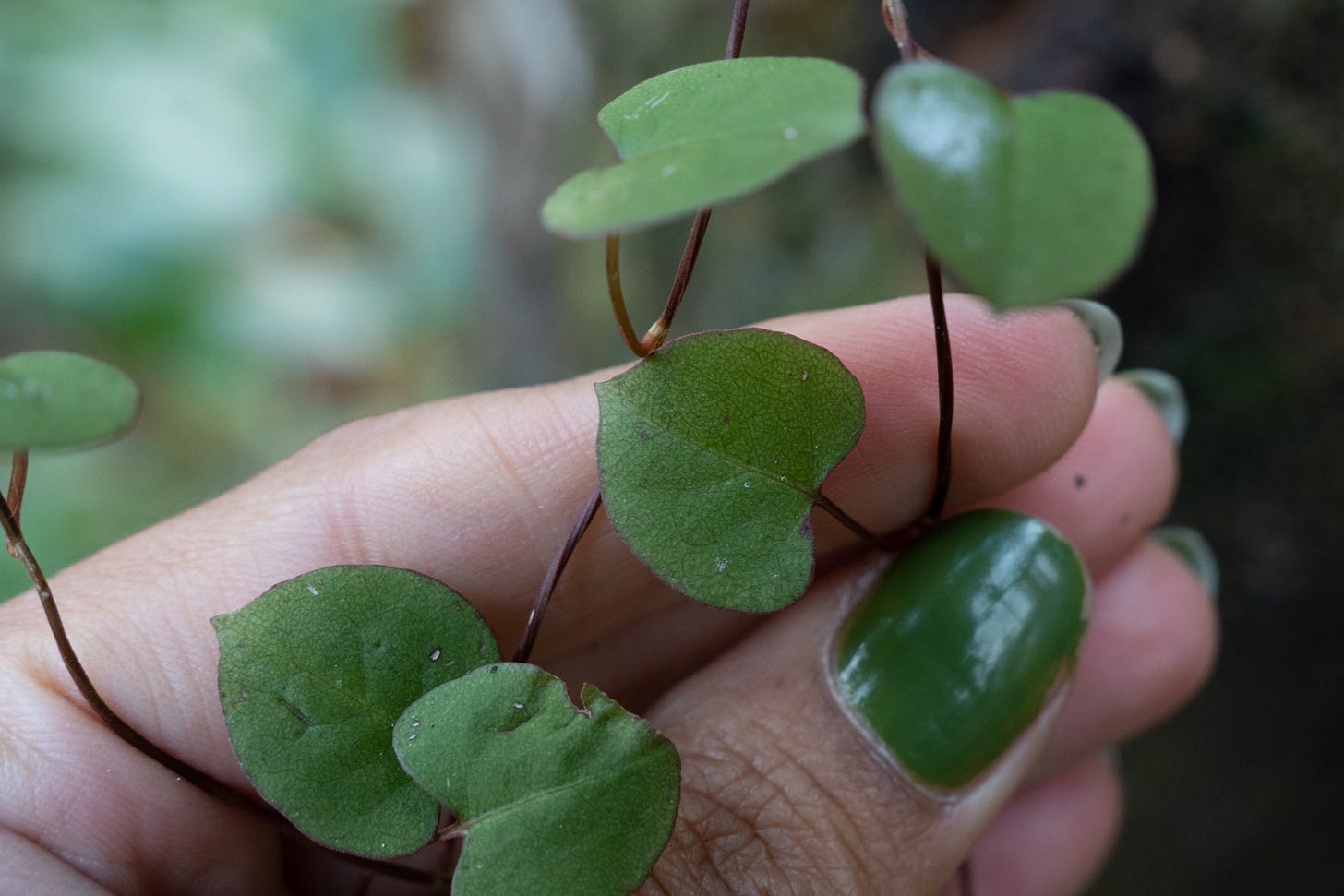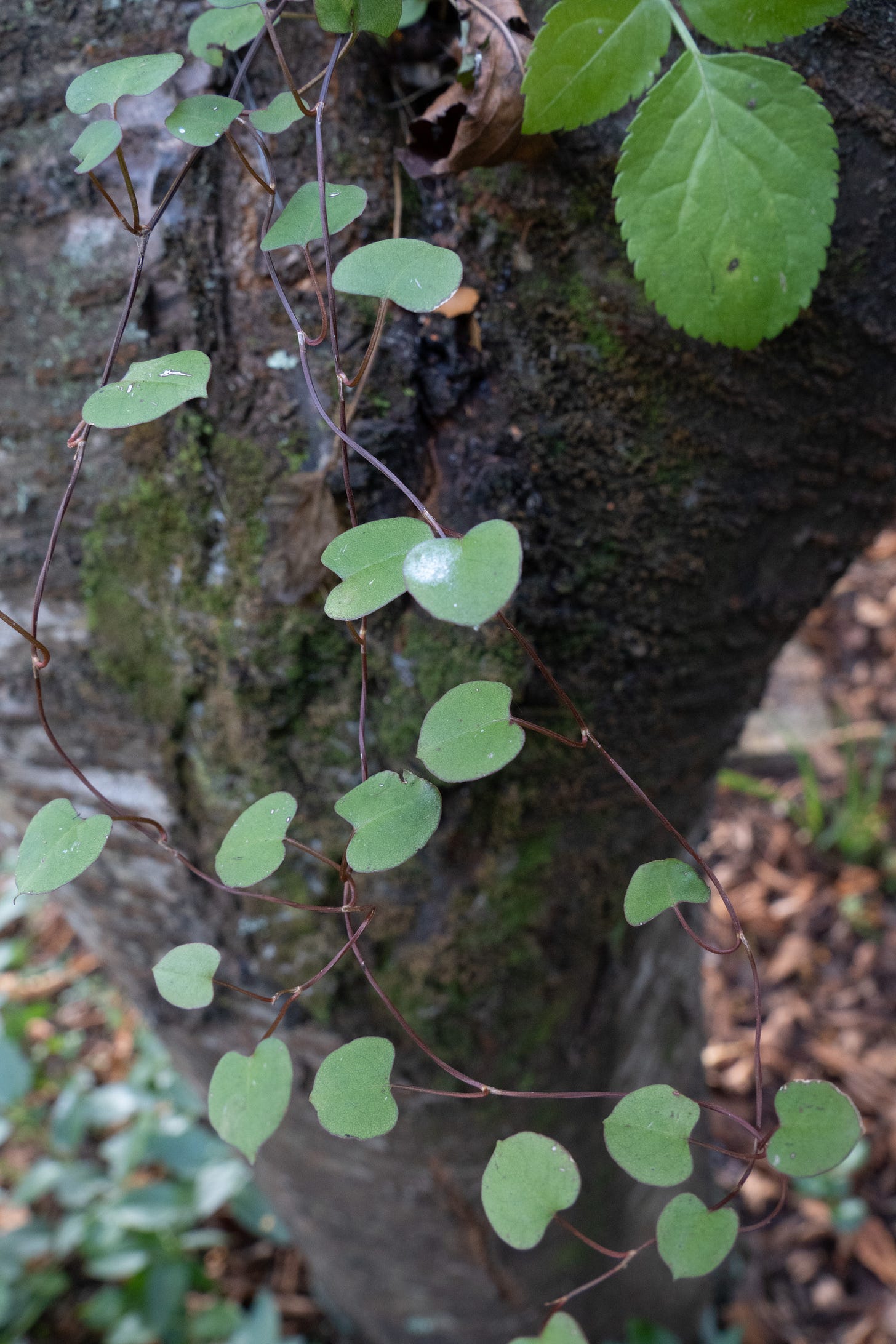Last summer we had a copper butterfly (Lycaena family) visit us. It was probably a common copper but scientists are still trying to accurately identify our copper butterfly species have so I can’t narrow it down any further (you can read more about it in the Butterfly Discovery Project).
From the start of our garden re-design we knew that providing for manu (birds) was a priority, on equal footing with providing for us, but after discovering the kahukōwhai (yellow admiral) we started providing for butterflies and moths, too.
My strategy is to focus on the lepidoptera (moths and butterflies) that I observe visiting in the garden, growing our supply of host plants one by one. Nettle for the admirals, swan plants for the monarchs, clover for the blues, and so forth. So, when I saw this copper in our garden I knew I had to get their host plant in.
The Moths & Butterflies NZ website told me their host plants are pōhuehue/muehlenbeckia so on my next trip to the garden centre I bought some. The muehlenbeckia genus is quite small, with only about 25 species in the whole world - here in Aotearoa we have five: astonii, australis, axillaris, complexa, and ephedroides.
Astonii, like our endemic kākābeak, is widely available for purchase from garden centres but extremely rare in the wild. The ephedroides species, or leafless pōhuehue, is classified as nationally vulnerable. There are some beautiful photos on iNaturalist that show their fairy-like flowers.
A few weeks ago I discovered another pōhuehue growing in our garden which I wrote about in my Sunday Spotlight. What excited me most was that I hadn’t planted it. I presume the seed was brought in by birds, as it was growing from a small pile of semi-rotted leaf litter in the crook of a cherry tree. It’s so encouraging to see tangible evidence of natural reforestation - even if it’s just a tiny patch in my backyard.
It is Muehlenbeckia australis, with common names including the large-leaved muehlenbeckia, and the southern muehlenbeckia. As well as being a host plant for the copper butterfly larvae (caterpillars) it’s also host to several other insects: two moths, and two stick insects, all endemic - and that’s just the australis.
Species muehlenbeckia australis is host to:
Lycaena (copper butterfly)
Pyrgotis eudorana
Apoctena orthropis
Argosarchus
Clitarchus hookeri
As if being a host plant to five different endemic insect species isn’t magical enough, some muehlenbeckia species have scented flowers. With the seed forming in the centre of its goblet-like flowers, the name “kiss-in-the-cup” was once proposed as its common name.1

Have a magical day,
Zenobia x
You might also like:
Butterfly Discovery Project - learn about our endeavours to identify Aotearoa’s copper butterflies; scroll to the bottom for a fantastic list of resources.
Pohuehue at Travis Wetland - a photo essay of muehlenbeckia at Travis Wetland in Ōtautahi/Christchurch.
Critter of the Week - a podcast episode from RNZ on the world of stick insects.
Laing, R. & Blackwell E. (1934). Plants of New Zealand (5th ed.).







I love Muehlenbeckia even though australis can be troublesome in the wrong place.